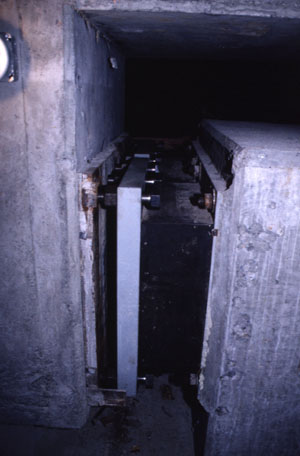Acoustical Society of America
ICA/ASA '98 Lay Language Papers
The Impact of Train Noise on Seattle's New Concert Hall Design
Andrew Clapham - andrewclapham@compuserve.com
Project Manager, Seattle Symphony
George Wilson- gwilson@wiai.com
Vibration & Noise Consultant
Wilson, Ihrig & Associates, Inc.
Popular version of paper 3aAAb1
Presented Wednesday morning, June 24, 1998
ICA/ASA '98, Seattle, WA
The site selected for the new Seattle Symphony Concert Hall, Benaroya Hall is a very desirable location intended to contribute to the revitalizing of the downtown core area of Seattle via a public/private partnership between the City of Seattle and the Seattle Symphony organization. However, the previously developed site in downtown Seattle is situated above a railroad tunnel that carries freight and passenger service below the busy downtown corridor and is adjacent to a transit tunnel that will have future light rail service for the downtown corridor. These sources of noise and vibration transmitted through the ground, combined with the ambient noise due to aircraft using the SeaTac Airport flight path and the street traffic characteristic of a busy city, presented a considerable challenge in designing the Concert Hall to achieve the requirement that noise from the railroad trains and any other external noise source must be inaudible in the auditorium and low enough to permit use for digital recording. Recording use capability is important because the Symphony generates a considerable income from recording in addition to the public performances.
Typical Section through the auditorium of Benaroya Hall

Because of the very close proximity of the railroad tunnel, and the future light rail trains to be added to the bus traffic in the tunnel adjacent to the new Hall site, the design developed incorporates three major features for achieving the low noise requirement: (1) a massive, stiff foundation bridging over the railroad tunnel, (2) construction of the auditorium as a separate boxwithinabox configuration and (3) support of the inner box auditorium structure on rubber pads to prevent transmission of noise from the railroad trains and transit trains into the Hall. The Design includes 8" thick concrete walls for the inner and outer box, creating a double wall arrangement with 9" air space for insulation against noise from street traffic, aircraft and from sources of noise within the outer building, such as air conditioning equipment and occupants.
The foundation construction included massive concrete beams, a concrete mat foundation 66 ft wide and 6.5 ft thick directly over the railroad tunnel and with a row of 6 ft diameter piers along each side extending to an elevation below the tunnel invert. An 18" thick concrete floor slab with similar concrete piers is the foundation for the area of the building to each side of the tunnel. The massive foundation provides resistance to vibration and noise transmitted through the ground to the building from the railroad trains and the transit tunnel. The structure above the foundation up to the floor below the Hall is also of massive concrete structure beyond that required for optimum structural design to add to the mass needed for reduction of noise and vibration and to provide a rigged foundation for the rubber pads supporting the inner box auditorium.

To keep the auditorium separated from the surrounding structure the inner box is supported on 308 x 7" thick natural rubber bearings located between the massive concrete structure at the upper Garage level and the comparable concrete structure at the base of the auditorium box. In addition to the load supporting rubber pads there are 224 lateral rubber pads designed to resist seismic motion of the maximum amplitude expected in the Seattle area, with a substantial factor of safety. The rubber pads and attachments are much stronger and less susceptible to damage than other structural components, especially during smaller earthquakes.